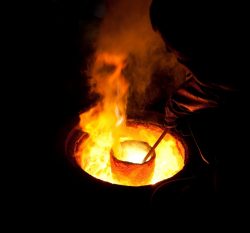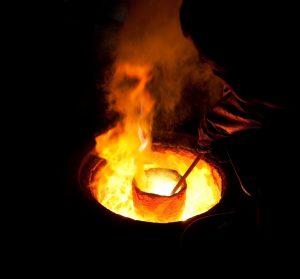
Metal casting has been around for centuries, in fact, the first castings can be dated back to ancient China in the 4th century B.C. Now, here we are in the 21st century, and there is a real buzz around metal 3D printing and it’s ability to print a metal object with no need for tooling, moulds or the pouring of hot metal. So what does metal 3D printing actually mean and is it really a contender to the metal casting industry?
What are the Metal 3D Printing technologies?
Finding out what metal 3D printing options are currently available is no easy task! The technology is advancing so quickly. You read one white paper on the subject and think you have it understood. However, two days later there is a press release and another slightly different technology is emerging!
That said, we have have researched what information is publicly available and created a one page summary. It gives a brief overview of the different types of metal 3D printing available today.
Impact on the metal casting Industry?
So what impact could 3D printing have on the metal casting industry? The answer is that theoretically, 3D printing has the potential to be hugely disruptive. The possibility to print complex structures and reduce weight whilst keeping the part strength and reliability is particularly exciting, especially to the automotive and aerospace industries.
However there is a major gap between theory and today’s reality. These current metal 3D printing techniques face a variety of issues that need to be addressed. The issues broadly include:
- Cost – the techniques are too expensive for mass production
- Quality – the metal powders are not good enough and create porosity issues
- Geometry constraints – cooling metal tends to warp leading to imperfect shapes
What we do know is that metal 3D printing research and development is gathering momentum and interest. In turn this brings together investment and the brightest minds to look at overcoming these issues.
So today the answer to the question of whether metal 3D printing is a rival to metal casting is ‘No’. What the answer will be in 2, 5 or 10 years time we don’t know. But, like any possibly disruptive technology, the answer is not to bury our head in the sand and ignore it. We have to jump on in, get involved and embrace what could quite possibly be a new era of manufacturing!


… You can cast complex metal components without tooling so many of the ‘advantages’ of 3D printing metals are mute points. Pouring metal is always going to be cheaper than printing it.
We in the foundry industry need to embrace additive manufacturing.
3d print cores and molds, or print investment casting patterns.
Understand the current technology, and watch for new technology.
At some point metal printing will converge with the total cost of traditional casting. For some size ranges and alloys this will come sooner than later.
Just as there are cores that are just better sand printed to avoid multiple core boxes and loose pieces, there are parts that could be better printed than cast. And with no pattern costs, low usage parts that could benefit from one-off customizations might already be cost effective to print.
In my opinion, if foundries do not embrace additive manufacturing, we are just waiting to be made extinct.
Large and few off castings are cheaper by 3D printing and development time is short. Here we are talking of 3D printing of mould with a portable machine. Several metal patterns have been developed through precise casings by 3D printing. and with reduced development time.. A number of prototypes have been possible in short delivery time.
But for mass production of castings on a commercial scale further development is needed.
Of course there are advantages in 3-D-printing!
As well as in using castings, made of a variety of possibilities: investment, sand, high pressure, etc. It always depends on certain circumstances such as material, size, weight, lead time, quantity, price, and some more. It is not easy to decide which way of manufacturing is the right one, but certainly 3-D-printing is one, especially when it comes to lead-times.
It is a big challenge for foundry engineers like me, maybe lost our jobs because there is no pouring system, feeder, venting, filters and melting process controllings for 3D printed castings. Also maybe no casting defects like inclusions, crack, porosity and airholes.etc to analysis by engineers. What we do in future?
This is truly useful, thanks.